A multiple property owner in Kampala, he is credited with starting the culture of the now mushrooming shopping arcades in the heart of Kampala’s central business district in the 1990s.
Today, he is associated with Freedom City, the multi-million dollar shopping mall and leisure centre in Najjanankumbi on Entebbe Road. But things have not always been rosy for billionaire real estate mogul John Sebalamu.
HUMBLE BEGINNINGS
The Town Is Abuzz With Talk Of One Sebalamu, Who Is Putting Up A Multi-million Dollar Shopping Arcade On Entebbe Road And Allegedly Owns About A Quarter Of The Buildings In The City. Who Is Sebalamu?
That talk is exaggerated. I don’t own half of the property they allege I own. I was born and raised in Kasanje, Masaka district. I dropped out in S1 in 1982. Life was hard. I then started peddling matooke on a bicycle. I would buy it from farmers in Kasanje and bring it to Nyendo trading centre.
For how long did you do that?
Not long. Those days, paraffin was scarce and many villagers could not ac¬cess it. That presented a good business opportunity. I started hawking paraffin in Masaka. I would fasten four jerry-cans of paraffin to a bicycle and move from one flea market to another. I made some good money. My siblings were also doing the same business.
A few years later, we moved to the main market in Masaka town, where we acquired stalls and started selling shoes.
How did you manage to move from peddling paraffin to owning a stall in the market?
I pooled resources with my elder brother John Bosco Muwonge (now arguably one of the top five property own¬ers in Kampala).
Our move was mainly triggered by the change in the political climate in 1986. The NRM had just taken over from Tito Okello Lutwa’s military junta and the stable political environment was conducive for a more permanent business.
We would buy shoes from trad¬ers and sell them in Masaka. This was easy because the road blocks manned by UNLA soldiers of the previous regime were now gone.
Also, commodities were cheap. I would buy a pair of plastic shoes from Kampala at sh25,000, which was cheap then.
Although he dropped out in S1, Sebalamu has built a thriving real estates business, including Freedom City above
I dreamt of owning a complex like Garden City So, how did you leave the market?
We took advantage of the stable political climate to make money. We gained popularity in Masaka as the two hardworking brothers. This was in 1988.
Our elder sister, Naiga, who, sadly, died a year later, had always acted as our mentor. (Sebalamu named Naiga Chambers, one of his many buildings in town, after her) She had incredible foresight in business and had two shops that dealt in second-hand clothes in Masaka town. She used to buy them from Kampala. She invited us to join the business in 1988.
Armed with a capital of about sh20m (which was about sh200, 000 after the 1987 currency reform), I joined the business. We used to buy the clothes from Kampala and sell them in Masaka.
After Naiga’s death, I partnered with my elder brother to run the shops. Over time, our stock grew by leaps and bounds and the Masaka market limited our business. It was time to move on. We would buy clothes from Kampala and sell them in Masaka
COMING TO KAMPALA
What was the next step?
In 1992, armed with a capital of sh100m, a fortune at the time as the dollar exchange rate was sh900, I moved to Kampala with my brothers Muwonge, Lubega, Segawa and sister Christine Nabukeera (all of whom are now renowned property owners in Kampala). We wanted to trade in Kampala because it provided a much bigger market.
Kampala is a big city. Didn’t you have any misgivings about venturing here?
Together with my siblings, we were dynamic and ready to embrace the business opportunities. On top of that, I thought sh100m was decent enough to venture into business.
So, did you follow up on the ambitions to go to Dubai and import merchandise?
Yes. My brother Bosco and I were the first Ugandans to import new clothes from Dubai to Kampala. We would bring the clothes in bales called dozen (dazini in common speak).
In Dubai, there were traders with so much merchandise that they didn’t have storage space for it, so they would give it to us on credit. We would come back, sell it then return to Dubai and pay them. We also hired a shop on a building now called Skylite Arcade next to Buganda bus park.
We inspired many people to join the business seeing as we were prospering. Some of these are now tycoons in Kampala. Because of this, I was nicknamed “Capital” by fellow traders, who look at me as the person who opened a way for them in business
Most people have come to hear about you after you embarked on the colossal Freedom City project on Entebbe Road. How did you come up with that?
Upon returning in the property business in the late 2000s, I found that the prices of property downtown Kampala had skyrocketed. There was a lot of confusion downtown as well. So, I decided to do something different.
A couple of years ago, I had admired Garden City mall and wished to own a complex like that one day.
So, here I was toying with the idea of a modern shopping and leisure centre out of town. I decided on it and started looking for land outside town.
I landed on 3.5 acres of prime land at Najjanankumbi on Entebbe Road. I acquired it from Buganda Land Board at $1m and started constructing Freedom City.
This project looks massive. How much do you estimate its total cost will be upon completion?
We expect it to consume over $20m (about sh45b). I think the cost would have been higher if I didn’t own a construction firm. I am my own contractor. I also procure my own materials — everything from sand to metal panels. I own a mine, where I get all the sand I use on the project.
Sebalamu named this building after his late sister Naiga
People ask me where I got this plan from. They don’t believe I developed it myself. That’s why I keep changing things. And considering I had decided to make real estate and construction a full-time job for me, I am supervising the construction personally monitoring every detail of it.
So, how big is Freedom City?
At some point I had thought of it being a hotel, but changed my mind. I have not entirely dropped the hotel idea though. The project covers pretty much all the 3.5 acres except for some space behind, which I have reserved for the hotel.

The mall itself, which is four storeys for now, boasts over 8,000 square metres of retail shopping space (the largest of these being a really big supermarket), a banking area (already six major bank branches are operational here) as well as big brand coffee shops, cinema area, a recreation area and health clubs among other key features.
So, where did you get the money to put up something so expensive?
It is largely funded by banks and my personal savings. Any plans for this project and any other projects you are going to undertake soon?
For now, I am concentrating on this project because it’s big with quite a lot of work to do. It is still in its early stages.
Manufacturing
We understand at one point you also tried diversifying into garment manufacturing, why did you chose to do so and how did it end?
By 2004 I had gone to China and was importing a lot of garments from there. I thought I would make better money if, rather than import, I added value to raw materials here by manufacturing garments the way Apparel Tri-Star U limited under the AGOA initiative, was doing.
I would create employment through economic linkages. This is the gospel the President was preaching to local investors.
Having identified an affordable source of raw materials in China, I got together with a few business partners and decided to start SEBCO Garments factory, which manufactured clothes locally.
Unfortunately, business did not go smoothly for us as we had problems with URA over an unclear policy on local value adders like us. They classified our raw materials that included buttons, clothes and packaging material wrongly.
They would classify and tax them as finished products yet they were actually raw materials. These items attracted a 150% surcharge!
As a result, our tax liability was so big, which shot our costs of production up. Coupled with on-and-off wrangling and legal taxation battles with URA, I decided to painfully close the company in 2006. I paid off my partners and we called it a day.
That must have been a big financial set-back. How did you recuperate from that?
Considering I was already into large scale garment importation before, I decided to go back into importation of garments from China and Dubai. Unfortunately, the dynamics of the game had changed so much I could no longer fit in there. I opted to concentrate on real estate, which I already had a foothold in as well
Joining real estate
When then did you pick interest in real estate?
In the mid-1990s, the Custodian Board, which had been entrusted with overseeing the property of departed Asian Ugandans, who had been expelled from Uganda by Idi Amin in 1972, started returning the buildings to their original owners. This followed the earlier controversial Expropriated Properties Act of 1982, which President Yoweri Museveni then accelerated and implemented.
Mini Price, one of Sebalamu’s many buildings in the city
Many of these people had, however, lost interest in these properties and in returning to Uganda. Most of them had new lives in wealthy countries in the West. So, they disposed of them cheaply. A building downtown cost between $80,000 and $200,000 (sh72m and sh180m then, which is sh200m and sh500m today).
Unfortunately, most of the people who had leased these buildings from the Custodian Board did not have the money to pay for them. So, Ugandans who had money bought these buildings. I remember that wealthy businessmen like Sudhir Ruparelia and Karim Hirji acquired a lot of prime property around town partly because of the rapport and trust they shared with these departed Asian-Ugandans.
In 1995, I constructed my first building on Ben Kiwanuka Street called Capital House. It was the first of the current shopping arcades you see all over downtown and in other emerging neighborhoods in Kampala. It was a different style from what everyone built.
I copied the style from Dubai. Soon, everyone jumped onto the bandwagon. All people did was simply buy old buildings, break them down and create shopping malls similar to the one I had seen in the Dubai. Traders took up the space fast, which in turn brought in good returns in rent.
You must have gone on a shopping spree of buildings then seeing as the money was obviously coming in
I wish I had. I got excited after my first building and thought I had ‘arrived’. But I was so blinded by what I thought were enormous profits in trading that I failed to see that real estate was the future of business in Kampala. See, at time, Uganda Revenue Authority (URA) was not yet as organized and professional and traders got away with not paying taxes. That accounted for the enormous profits.
So, was that the end of your interest in real estate at the time?
No. But, if I knew then what I know now, I would be better-placed in the property business than I am today.
Between 1995 and 1998, I bought more buildings in town most of which I sold off. The cost of the buildings had shot up to $800,000. I built Naiga Chambers and Mini Price all on Kampala Road. I connected these three with an overpass. Even then, real estate was not my primary interest.
Were you trading in clothes from Dubai the whole time?
Yes. But starting in 1997, URA became stringent. There were taxes we did not understand from VAT to so many others. Traders felt cheated.
That’s the time I started taking property business in Kampala seriously. Unfortunately, the cost of building from 2000 was too high and rapid expansion was not possible. I bought and built a couple of buildings, including Carlton Hotel and former Container Village, but sold many off.
On family in business
You and your siblings come off as a very close and cooperative family. How has this helped you in business?
Yes, we are close and work together in many ways. This is because we realised you can’t stand alone and go very far. You might be good at spotting business opportunities, but fear taking risks, so you need a sibling, who has the guts to take the risk.
In relation to that, no one should deceive you that they like you or trust you if they are at war and suspicious of their siblings and relatives.
Family is also key in business because your family acts as your advisers, mentors and could help you out when you are facing a major challenge.
Source: bzina.





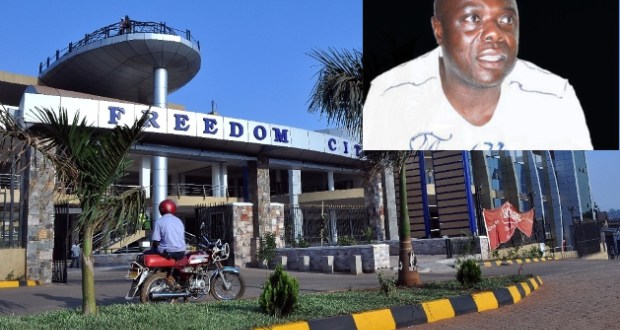














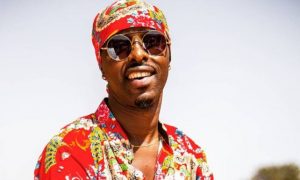





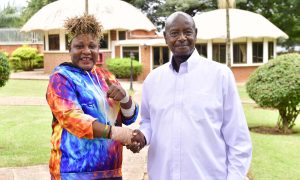

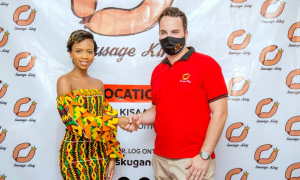



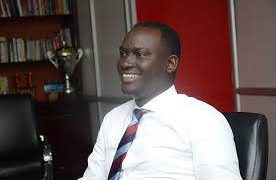







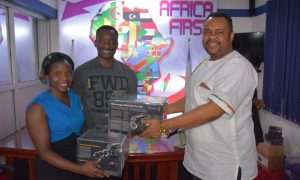










Share this post: